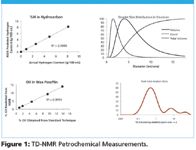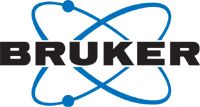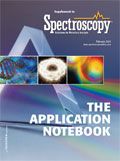Petrochemical Product and Process Control Using Rapid TD-NMR Technology
TD-NMR (Time-Domain Nuclear Magnetic Resonance) is a powerful tool for the petrochemical industry, from exploration to refining, that examines materials at the molecular level to quantify physicochemical properties.
Supriyo Ghosh, Bruker Optics
Petrochemical production starts with exploration and mapping of oil reservoirs in rock beds. The petro-physical properties of rocks during exploration (for example porosity, water content, and oil content) and their availability for extraction are very important parameters for decision making. Extraction of oil from the pores in rock often results in formation of an emulsion. The characteristics of this emulsion have a significant effect on separation of crude oil and damage to transport systems. The hydrogen content of crude oil (as well as that of intermediates and final products, in further stages of refining) is also a crucial factor in product quality and hence, pricing.
Benchtop TD-NMR instruments operate on the same principle of physics as found in high-resolution NMR or magnetic resonance imaging (MRI) instruments. With respect to this set of applications, the instrument obtains signals from all the hydrogen atoms present in the sample, irrespective of its color, opacity, or surface characteristics. In response to properly designed pulse-sequences, the TD-NMR signal from hydrogen then reveals the relaxation and diffusion properties of the hydrogen-bearing molecules in the sample. The quantification of various types of relaxation processes and diffusion provides the tool to monitor molecular motions at a wide range of time and length scales. Many well-established applications have been developed and are currently being used in the petroleum industry, including:
- Rock core analysis (Bulk porosity, Pore size distribution and content, Drainage & Permeability, Free fluid index (FFI), Bound fluid volume (BFV), Capillary pressure curve, Connectivity & Tortuosity)
- % Hydrogen in hydrocarbons (ASTM)
- Bitumen/water/naptha content in oil sands
- Real-time separation monitoring
- Crystallization kinetics
- Viscosity of crude oils
- Droplet size in oil-in-water and water-in-oil emulsions
- Oil content in wax/paraffin
Experimental Conditions
The TD-NMR measurements involve very little sample preparation, except for placing the sample inside the probe. No chemical change occurs to the sample as it undergoes the measurement. Most of the measurements can be accomplished in seconds. One instrument can be used to analyze multiple physico-chemical properties through use of proper pulse-sequences. The whole measurement process can be completely automated using available robotic accessories. For example, the % H content measurement in hydrocarbon samples involved filling up the 18 mm diameter tubes up to a height of ~3 cm and loading them to the autosampler rack, in terms of sample preparation. The whole measurement sequence was automated and took 8 s for each sample.
Results & Conclusions
Figure 1 shows TD-NMR measurements for various relevant petrochemical applications with the precision of ±0.05 or better. TD-NMR, is an easy-to-use and relatively inexpensive technology that can provide high-throughput physico-chemical characterization of materials from exploration through refining.

Figure 1

Bruker Optics
19 Fortune Drive, Billerica, MA 01821
tel. (978)439-9899; fax (281)292-5055
Website: www.theminispec.com

Thermo Fisher Scientists Highlight the Latest Advances in Process Monitoring with Raman Spectroscopy
April 1st 2025In this exclusive Spectroscopy interview, John Richmond and Tom Dearing of Thermo Fisher Scientific discuss the company’s Raman technology and the latest trends for process monitoring across various applications.
A Seamless Trace Elemental Analysis Prescription for Quality Pharmaceuticals
March 31st 2025Quality assurance and quality control (QA/QC) are essential in pharmaceutical manufacturing to ensure compliance with standards like United States Pharmacopoeia <232> and ICH Q3D, as well as FDA regulations. Reliable and user-friendly testing solutions help QA/QC labs deliver precise trace elemental analyses while meeting throughput demands and data security requirements.